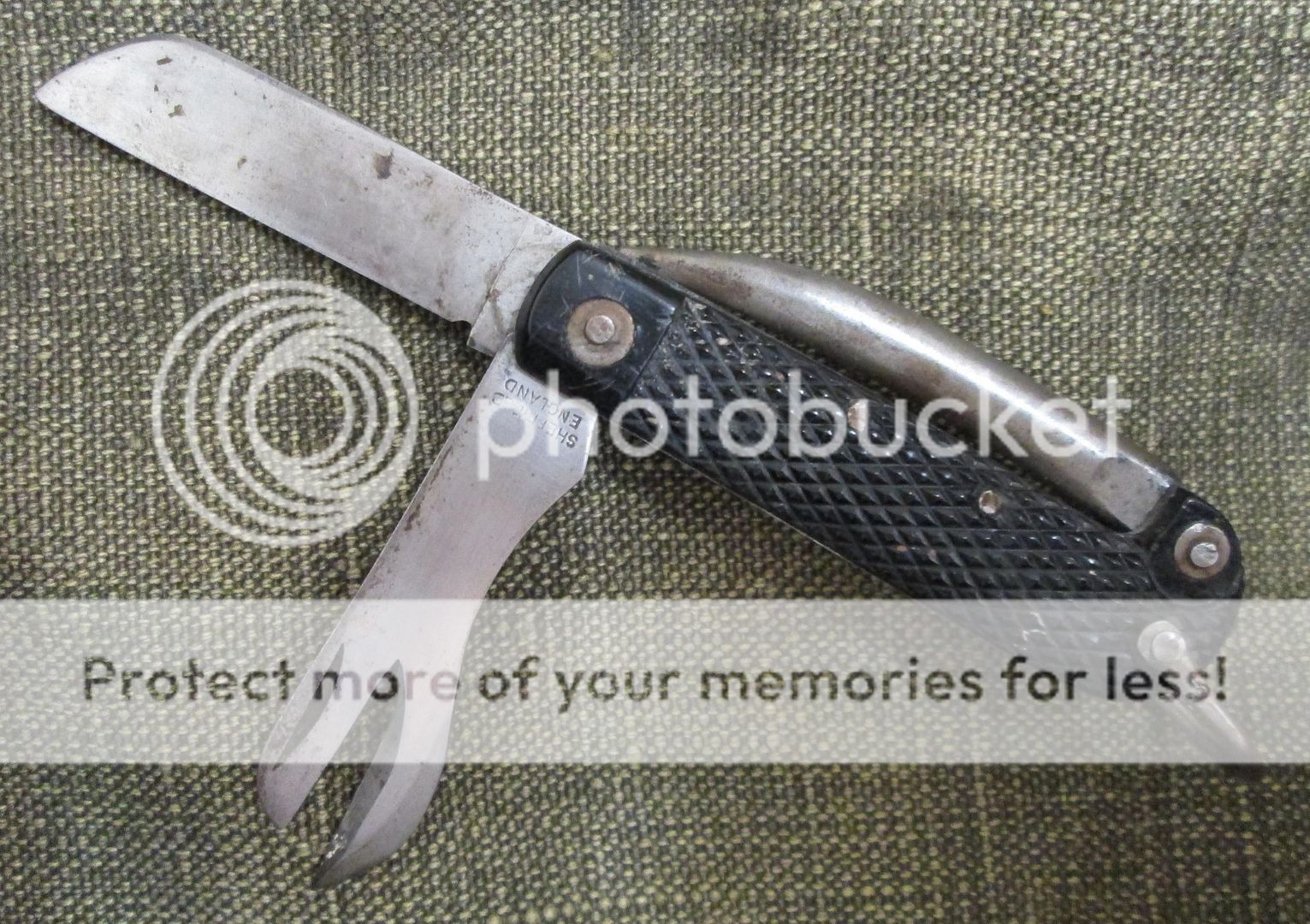- Joined
- Dec 2, 2005
- Messages
- 70,783



I probably should have taken more care in arranging the order of that group shot, but the next knife in the top row is this Nowill knife. It's a hybrid pattern, but a fairly common one. It's a bit shorter than the WW1 knife, with a closed length of 4 3/8". The spearpoint blade is 3" in length, and the marlin spike almost exactly the same. The can-opener (or 'tin-opener' as it would have been called) is of the 1939-1945 design, without the bottle-opener. The shackle is steel rather than copper (on the standard post-1939 pattern, the copper shackle was replaced by a steel one in 1942). The scales are flat and made of compressed fibre, similar to leather. I had to remove some material at one end because it had swollen under the pivot pin.

Smiling-Knife, I'd be grateful for your correction if I get anything wrong!
Jack



























